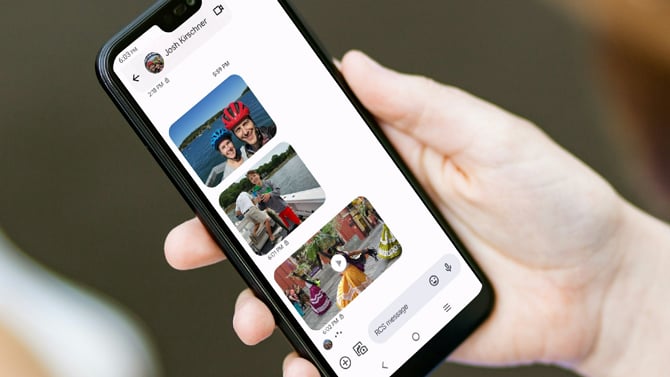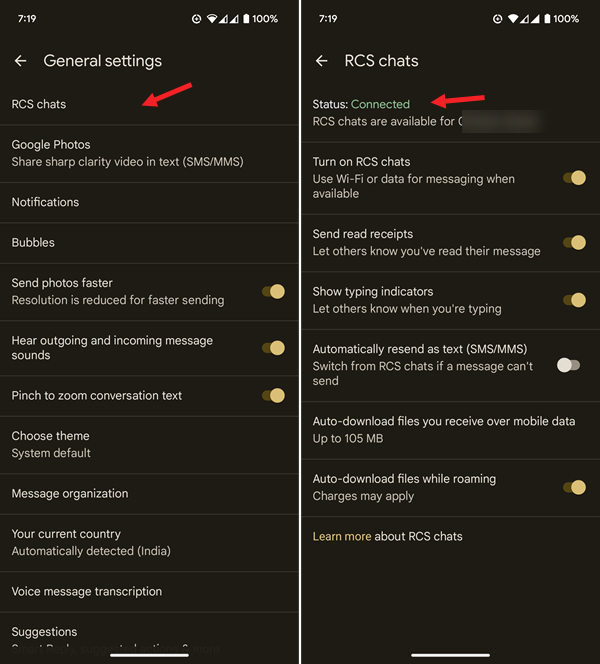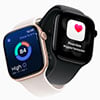Beginning sometime this year, texting between iPhone and Android users will be a lot less troublesome, as Apple has agreed to add support for RCS Universal Profile. Among its many benefits, RCS will pave the way for Android and iOS users to finally share high-quality videos and images. Currently, videos sent between iOS and Android are compressed and have low resolution, making them less appealing for sharing. RCS support will fix this issue.

Today, when I use my Android phone to send a text or an image to an iPhone or receive an image from an iPhone-wielding friend, it only goes through as standard SMS/MMS. The media often gets compressed to maintain the size and data limitations of standard SMS and MMS, to the point where videos become essentially unwatchable.
The amount of compression varies by carrier: T-Mobile and Verizon limit file size to around 3 MB, while AT&T cuts off at a paltry 1 MB.
What is RCS (Rich Communication Services)?
RCS (Rich Communication Services) is a new standard in mobile communications that will be superseding SMS messages by replacing them with richer text messages and supporting media-based communication. RCS is built right into the carrier's network. It does not rely on internet connectivity like many other messaging apps such as WhatsApp or Facebook Messenger.
What is the RCS Universal Profile?
GSMA’s Universal Profile, also known as the Rich Communications Universal Profile, is a globally agreed-upon standard for implementing RCS in a way that allows subscribers of different carriers to communicate with each other and increase interoperability to deliver a consistent and advanced messaging experience for consumers worldwide. The standard is already in use on most Android smartphones.
Read more: Why Are My iPhone Messages Green?
How will RCS let Android and iOS users share high-quality videos and images?
RCS doesn’t over-compress media, so the result you get is shared video or image files in more detail. Simply put, with Apple embracing RCS, if a friend captures an amazingly good picture on their Android device, they can now share the image with your iPhone via messaging while maintaining the same image quality. It will eliminate the grainy and unsatisfactory media quality associated with traditional MMS, offering a better sharing experience.
Read more: How to Find and Recover Recently Deleted Text Messages on Android
However, the process isn’t entirely seamless yet. We found in our testing that directly adding a photo or video to an RCS chat can still result in some level of compression, taking our FullHD videos (1080) down to SD (480). However, you can work around this by attaching the video as a file, instead. This retains the FullHD resolution when sent – at least up to RCS’ current 100 MB file size limit.
RCS also supports more than basic media files. You can use it to send documents and other file types that aren’t supported by the SMS or MMS standards. Plus, it doesn’t require users to download an extra app to send images in higher resolutions or create additional accounts. It will work in tandem with the native messaging app that’s built into iOS devices (iMessage) and most native Android messaging apps.
Read more: How to Free up Space on Your iPhone and Android Phone
How to check if you’re talking to someone with RCS?
- To check RCS availability and status, open Google Messages.
- Tap your profile photo or icon.
- Go to 'Messages' settings and then tap 'General.'
- Select 'RCS chats' option. If the RCS Chats option is not available, tap 'Chat features.'
- Toggle on the 'RCS chats' option.

There’s no specific timeline for when RCS will officially roll out on Apple devices this year. We might have to wait until Apple hosts the Worldwide Developer’s Conference (WWDC), expected to be in June 2024, for more information on the update.
[Image credits: Screenshots via Techlicious, phone mockup via Canva.]
As a lifelong tech enthusiast, Hemant Saxena is always looking for the latest gadgets that intersect with his hobbies. For more than a decade, he has been writing about consumer gadgets, popular apps, and social media tips for publications, including Windows Club and Techmate Tricks.

















From Jeff on January 24, 2024 :: 10:47 pm
I am just curious as to who writes these articles, and is there any editing at all. I’m bringing this up because it is everywhere, not only on your site. Almost every article I read nowadays reads like it was written by a 5 year old. This site is really bad for this. What I mean is does anyone read these articles before they’re published to your website? The grammar errors alone make my skin crawl, not to mention misspelled words, and the use of past, present, and future tense used in one story. It just doesn’t work. You’re a very respected publication in your webspace. Your writing should dictate this. Thanks for your time.
Reply
From Wowed on January 24, 2024 :: 11:22 pm
You’re being awfully judge here considering the first sentence in your own comment is knocking the bad grammar ball out into the rock pile. Though I agree the Internet is, in general, loaded with sloppy writings, this article isn’t one of them.
Reply
From Josh Kirschner on January 25, 2024 :: 11:37 am
Thank you for the feedback. I take responsibility for the editing issues in the original publication. I have re-edited the article to enhance the clarity and writing.
Reply